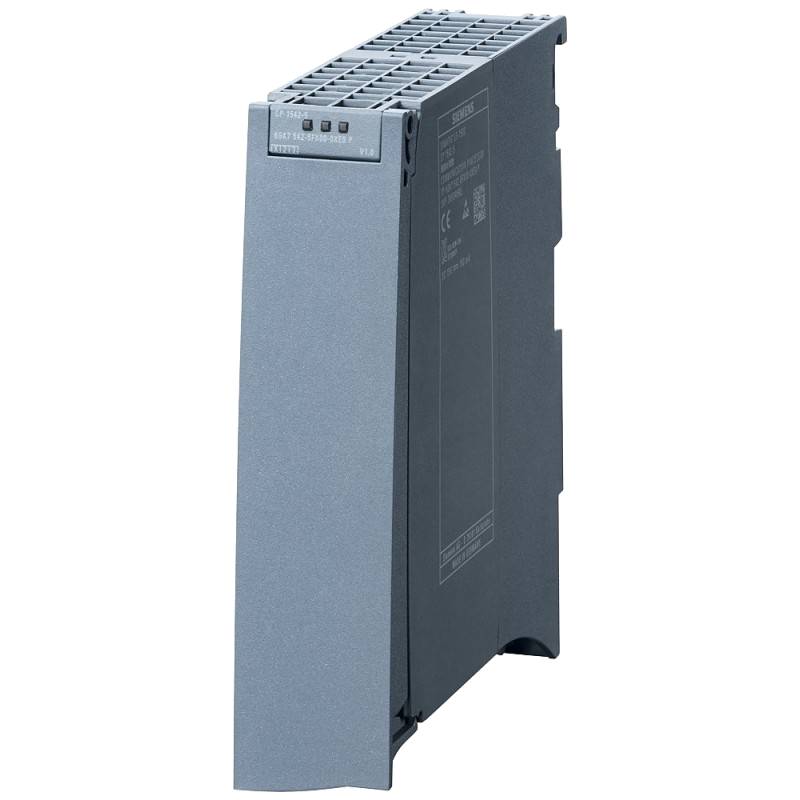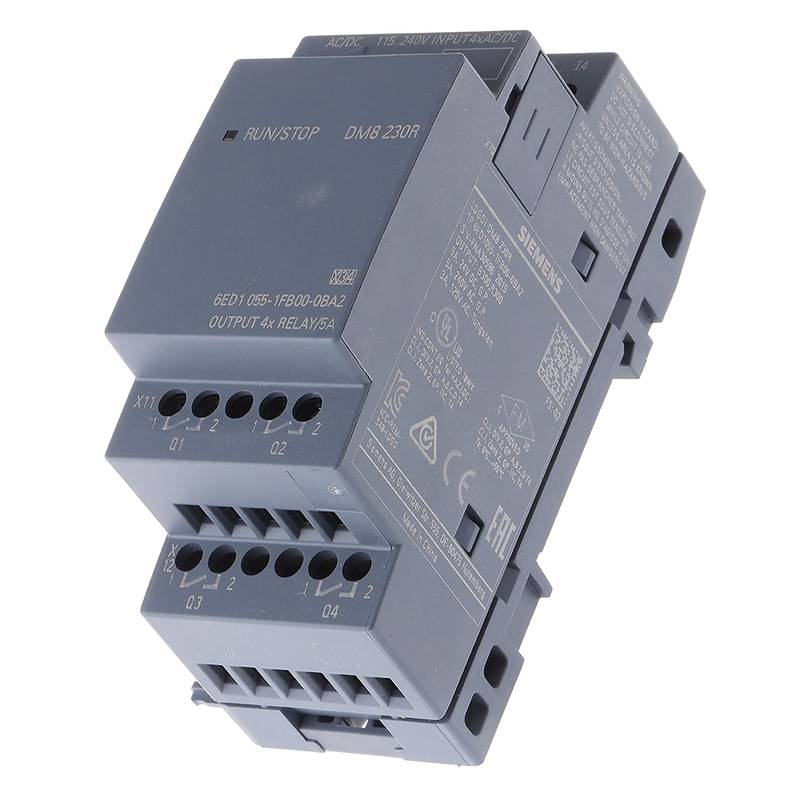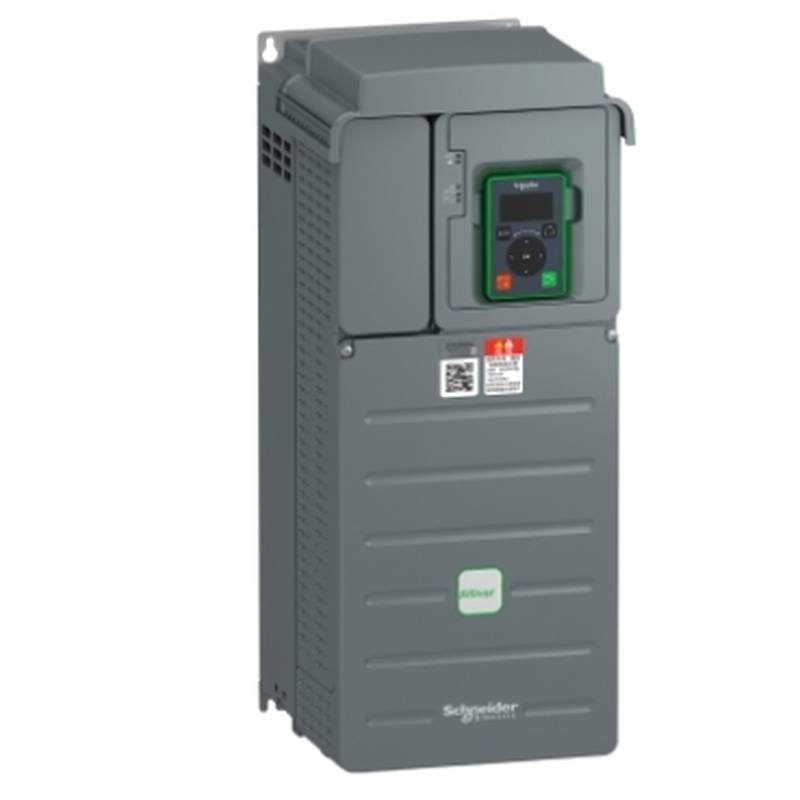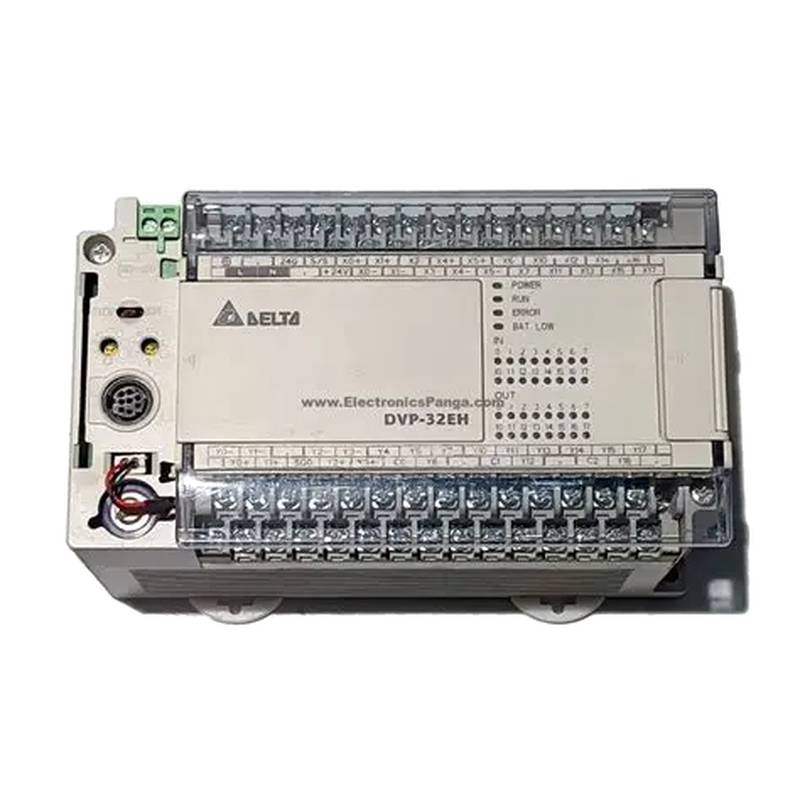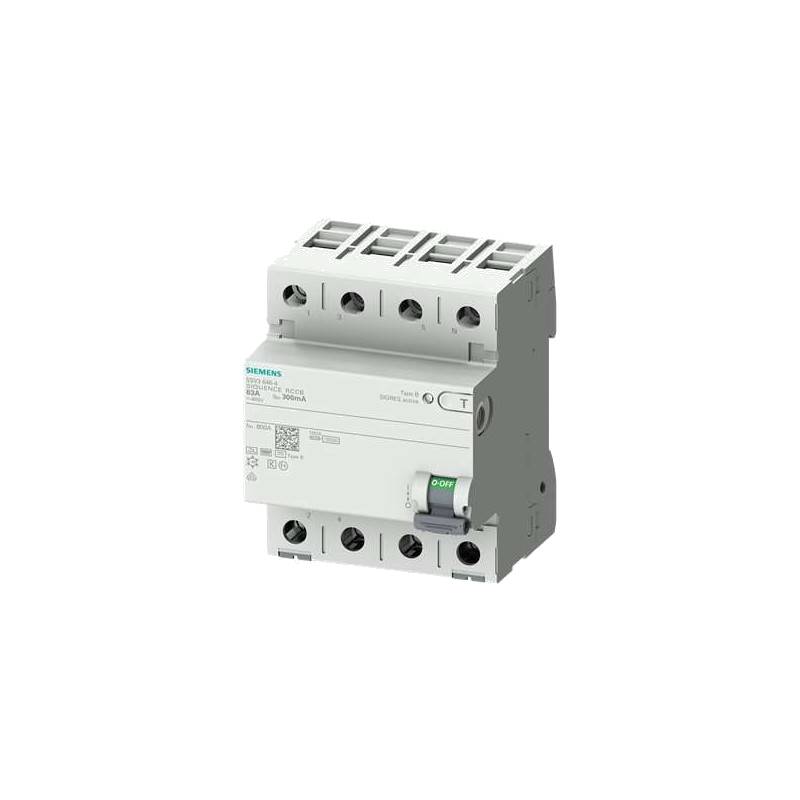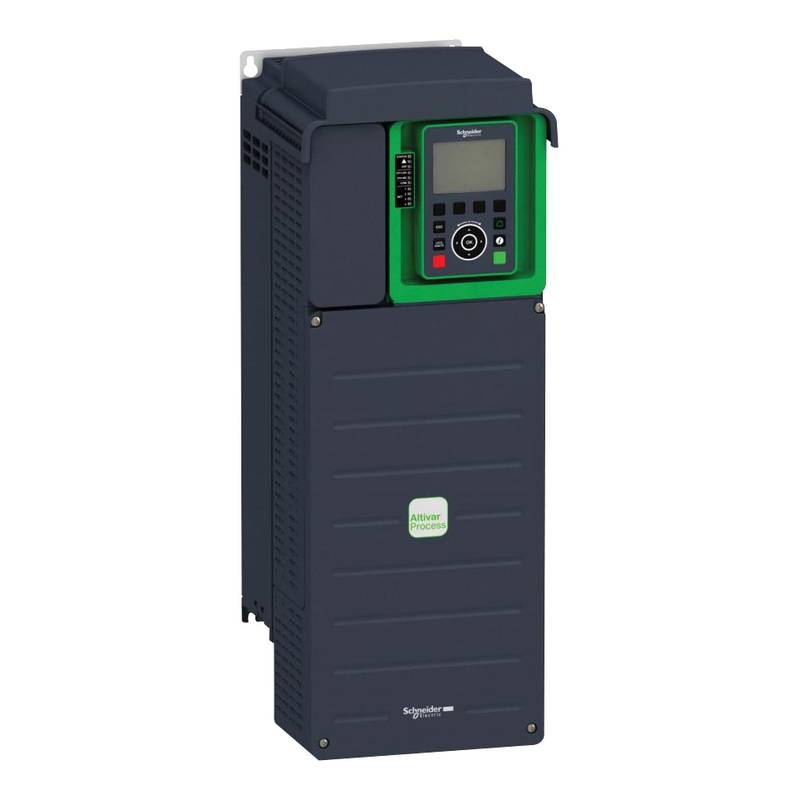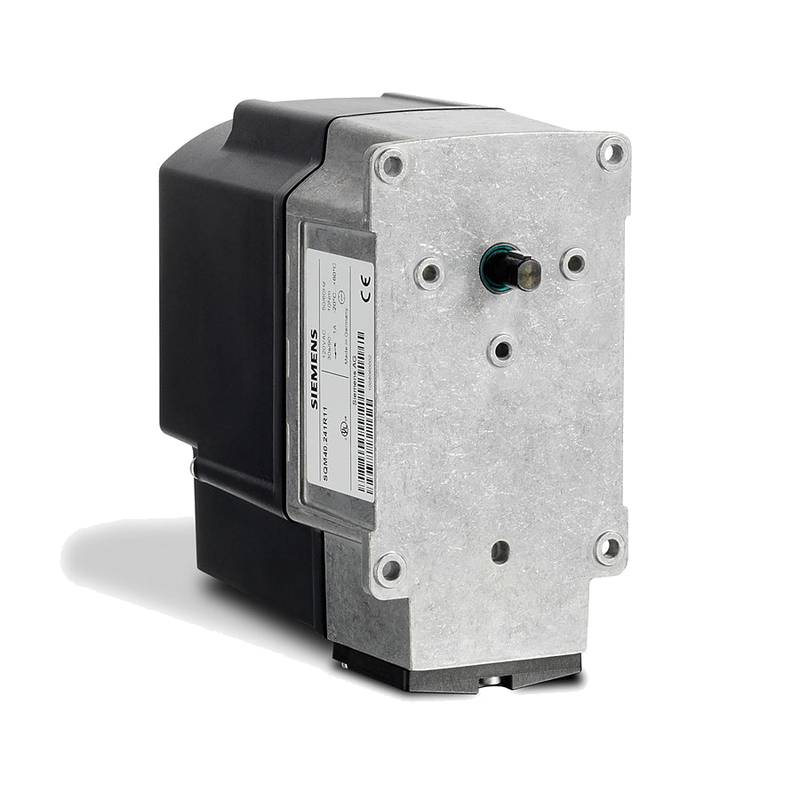
The Siemens 6GK7542-5FX00-0XE0 S7-1500 Fiber Optic Communication Module is a critical component for robust industrial networking, offering high-speed data transmission and enhanced network resilience. This module is engineered to provide reliable communication in demanding environments, leveraging the inherent advantages of fiber optics to overcome electromagnetic interference and extend network distances. Its integration within the S7-1500 automation system ensures seamless connectivity and advanced control capabilities for sophisticated industrial applications. Key technical specifications include its support for various fiber optic standards, ensuring broad compatibility and flexible deployment options.
| Feature | Specification |
| :------------------- | :------------------------------------------ |
| Product Type | Communication Module |
| Series | SIMATIC S7-1500 |
| Order Number | 6GK7542-5FX00-0XE0 |
| Interface | Fiber Optic |
| Network Protocols | PROFINET, PROFIBUS (configurable) |
| Data Transfer Rate | Up to 100 Mbps (PROFINET) |
| Connectors | SC connectors (typically, depending on variant) |
| Operating Voltage | 24 V DC |
| Temperature Range | -20°C to +60°C |
| Dimensions | Standard S7-1500 module form factor |
Core Features & Market Positioning
The Siemens 6GK7542-5FX00-0XE0 stands out in the industrial communication landscape due to its robust design and advanced functionality. It provides a critical link for industrial Ethernet networks, utilizing fiber optics to achieve superior immunity to electromagnetic interference (EMI) and noise, a common challenge in manufacturing facilities. This immunity is paramount for maintaining stable data flow in environments with high electrical activity. The module’s ability to support both PROFINET and PROFIBUS protocols, often configurable, offers exceptional flexibility, allowing it to interface with a wide range of Siemens and third-party automation devices. This dual-protocol capability positions it as a versatile solution for both new installations and upgrades of existing infrastructure, ensuring compatibility and minimizing the need for specialized gateways in many scenarios. Its integration into the S7-1500 platform signifies a commitment to high-performance automation, benefiting from the platform’s advanced processing power and diagnostic capabilities.
Key Application Scenarios
This fiber optic communication module is ideally suited for applications demanding high network reliability and extended communication distances. In process automation, it ensures uninterrupted data exchange between distributed control units and central SCADA systems, even across large plant sites where copper cabling would be susceptible to interference. For manufacturing automation, particularly in environments with heavy machinery generating significant EMI, the 6GK7542-5FX00-0XE0 provides a stable communication backbone for high-speed data acquisition and control, crucial for real-time operations and quality control. Furthermore, its use in intelligent transportation systems or utility networks where long-haul, interference-free communication is essential highlights its adaptability beyond traditional factory floors. The ability to segment networks and enhance security through fiber optics also makes it a valuable component in critical infrastructure projects.
Practical System Integration Guidance
Integrating the Siemens 6GK7542-5FX00-0XE0 into an S7-1500 system is a streamlined process designed for industrial efficiency. The module snaps directly onto the S7-1500 CPU or an expansion unit, following standard DIN rail mounting procedures. For communication, it utilizes SC connectors, requiring appropriate fiber optic patch cables (e.g., duplex multimode or singlemode, depending on the specific variant and required distance) to connect to network switches or other communication nodes. Configuration is typically performed using Siemens' TIA Portal software, where the module is identified by its GSD file. Within TIA Portal, engineers can assign IP addresses, configure PROFINET or PROFIBUS parameters, set up diagnostic alarms, and define communication relationships with other devices on the network. Ensuring correct fiber optic cable termination and proper routing to avoid sharp bends is crucial for optimal performance and signal integrity.
Operation and Risk Mitigation
Operating the Siemens 6GK7542-5FX00-0XE0 requires adherence to standard industrial automation practices. Proper grounding and power supply management are essential to prevent electrical surges and ensure module longevity. The module's fiber optic nature inherently mitigates risks associated with electrical faults and ground loops, common concerns with copper-based networks. Regular visual inspection of fiber optic connections for dirt or damage, along with periodic performance monitoring via TIA Portal diagnostics, can preemptively address potential issues. In case of communication faults, TIA Portal provides detailed diagnostic information, often indicating cable breaks, connector issues, or device communication failures. Understanding the module's status LEDs is also key; steady green lights typically indicate normal operation, while red or flashing lights signal errors that require investigation.
Scalability & Long-Term Value
The Siemens 6GK7542-5FX00-0XE0 offers significant scalability and long-term value within the Siemens automation ecosystem. As part of the S7-1500 family, it benefits from continuous firmware updates and backward compatibility with broader Siemens product portfolios, ensuring that systems remain current and adaptable. The module's robust fiber optic interface supports high data rates, positioning it well for future network demands and the increasing bandwidth requirements of Industry 4.0 applications, such as advanced analytics, machine learning, and IIoT integrations. Its modular design allows for easy replacement or expansion of network segments without disrupting the entire system, facilitating upgrades and modifications as operational needs evolve. The inherent reliability and longevity of fiber optics further contribute to a reduced total cost of ownership by minimizing maintenance and downtime.
Frequently Asked Questions
What is the primary advantage of using the Siemens 6GK7542-5FX00-0XE0 for industrial networking?
The module's fiber optic interface provides superior immunity to electromagnetic interference and electrical noise, ensuring highly reliable data transmission in harsh industrial environments. This robustness is critical for maintaining stable operations and preventing communication disruptions that can impact productivity.
Fiber optic communication also enables significantly longer transmission distances compared to standard copper Ethernet, making it ideal for large plant layouts or geographically dispersed facilities. The inherent security of fiber optic links, being more difficult to tap without detection, adds another layer of operational safety.
This enhanced reliability and extended reach directly translate into reduced downtime, improved process control, and greater overall system efficiency, which are paramount in modern industrial settings.
How do I connect the Siemens 6GK7542-5FX00-0XE0 module to my S7-1500 PLC?
The 6GK7542-5FX00-0XE0 is designed for easy integration into the SIMATIC S7-1500 modular system. It simply plugs into an available slot on the S7-1500 CPU or an expansion chassis, securely locking into place.
Connection to the industrial network is established using standard fiber optic patch cables that terminate in SC connectors on the module. Ensure you use the correct type of fiber (multimode or singlemode) and cable quality appropriate for your network's distance requirements.
Once physically installed, the module is configured within Siemens' TIA Portal engineering software. Here, you define network settings, assign an IP address, and specify communication protocols like PROFINET or PROFIBUS as needed for your application.
What are the typical applications where the 6GK7542-5FX00-0XE0 module is best utilized?
This module excels in scenarios demanding high network integrity and resistance to environmental disturbances. Key applications include process industries like chemical plants or refineries where electrical noise is prevalent.
It is also highly effective in manufacturing environments with heavy machinery, such as automotive assembly lines or metal fabrication shops, ensuring uninterrupted communication for robotics and automation systems. Its ability to support long-distance communication makes it suitable for inter-building connectivity or utility networks.
Furthermore, applications requiring a secure and highly available network infrastructure, like critical infrastructure monitoring or transportation systems, benefit significantly from the robust and interference-free nature of fiber optic communication provided by this module.
Can this module be used with both PROFINET and PROFIBUS networks?
Yes, the Siemens 6GK7542-5FX00-0XE0 is designed for versatility and typically supports configurable operation for both PROFINET and PROFIBUS networks. This dual-protocol capability allows for flexible integration into diverse automation architectures.
Engineers can select and configure the desired protocol (PROFINET or PROFIBUS) during the system engineering phase, usually within the TIA Portal software. This means a single module can serve different networking needs within a plant or be used to bridge between different network types if required.
This adaptability reduces the need for multiple specialized modules or complex gateway solutions, simplifying network design, reducing hardware costs, and streamlining maintenance efforts across your automation infrastructure.
What are the key technical specifications I should consider before purchasing the 6GK7542-5FX00-0XE0?
Crucially, note the supported network protocols (PROFINET, PROFIBUS), as this dictates compatibility with your existing or planned network infrastructure. Also, verify the type of fiber optic connectors (commonly SC) and the required fiber type (multimode or singlemode) and its associated maximum transmission distance.
Consider the operating temperature range (-20°C to +60°C is typical) to ensure suitability for your specific environmental conditions. The module's power supply requirements (24 V DC) and its physical dimensions for integration into the S7-1500 rack are also important practical considerations.
Understanding the data transfer rates supported (e.g., up to 100 Mbps for PROFINET) is essential for ensuring your application's bandwidth needs are met. Always refer to the specific product datasheet for the most accurate and detailed specifications.
How does the fiber optic interface enhance network reliability compared to copper Ethernet?
Fiber optic cables transmit data using light pulses, which are immune to electromagnetic interference (EMI) and radio frequency interference (RFI) that commonly plague copper Ethernet cables in industrial settings. This immunity prevents signal degradation and data corruption.
Unlike copper, fiber optics do not conduct electricity, eliminating the risk of ground loops and providing electrical isolation between network segments. This significantly enhances safety and prevents damage to equipment due to voltage fluctuations or lightning strikes.
The inherent physical properties of fiber optics also allow for longer transmission distances without the need for signal repeaters, which simplifies network design and reduces potential points of failure over extensive plant areas or between facilities.
What are common troubleshooting steps if the 6GK7542-5FX00-0XE0 module experiences communication issues?
Begin by visually inspecting the fiber optic connections at both the module and the connected network device for any signs of damage, dirt, or improper seating. Clean the fiber optic ferrules if necessary using approved cleaning supplies.
Check the status LEDs on the module and the connected switch or device for any error indications. Consult the S7-1500 system diagnostics in TIA Portal, which often provides specific error messages related to communication failures, such as "timeout" or "invalid data."
Verify the module's configuration in TIA Portal, ensuring correct IP addressing, network settings, and protocol configurations (PROFINET/PROFIBUS) match the rest of the network. Confirm that the fiber optic cable type and length are appropriate for the link.
How does the S7-1500 platform benefit from using this fiber optic communication module?
The S7-1500 platform, known for its high performance and advanced diagnostics, gains a robust and reliable communication channel through this fiber optic module. This enhances the overall stability and data integrity of the automation system.
Integration into the S7-1500 allows for centralized configuration and diagnostics of the communication module via TIA Portal, simplifying engineering and maintenance. The module leverages the platform's processing power for efficient data handling.
This combination ensures that even demanding applications requiring high-speed, interference-free communication can be effectively managed by the S7-1500 system, supporting advanced control strategies and future scalability within Siemens' automation ecosystem.
Is the Siemens 6GK7542-5FX00-0XE0 module suitable for explosion-proof (Ex) environments?
Typically, standard versions of the 6GK7542-5FX00-0XE0 are not inherently designed for direct use in hazardous (explosion-proof) zones without specific certifications or protective measures. Industrial environments requiring Ex-rated equipment have very strict safety standards.
For deployment in Ex-rated areas, Siemens offers specialized versions or requires the use of certified protective enclosures and interfaces that meet the specific ATEX or IECEx directives for the zone in question. It is crucial to consult the product's specific documentation and relevant safety standards.
Always verify the exact product variant and its associated Ex certifications before specifying or installing it in potentially explosive atmospheres. Incorrect usage can lead to severe safety hazards and non-compliance with regulations.
What is the expected lifespan and maintenance requirement for this fiber optic module?
Fiber optic communication modules like the 6GK7542-5FX00-0XE0 are generally designed for long operational lifespans, often exceeding 10-15 years, due to their solid-state nature and lack of moving parts. Maintenance is typically minimal.
The primary maintenance consideration involves ensuring the cleanliness and integrity of the fiber optic connectors and cables. Periodic visual inspections and cleaning of the SC connectors can prevent signal loss caused by dust or contamination.
Beyond physical connection care, the module itself requires no routine maintenance. Its reliability is inherent in its design, but proactive monitoring of network performance and diagnostics via TIA Portal is recommended to catch any potential issues early.














